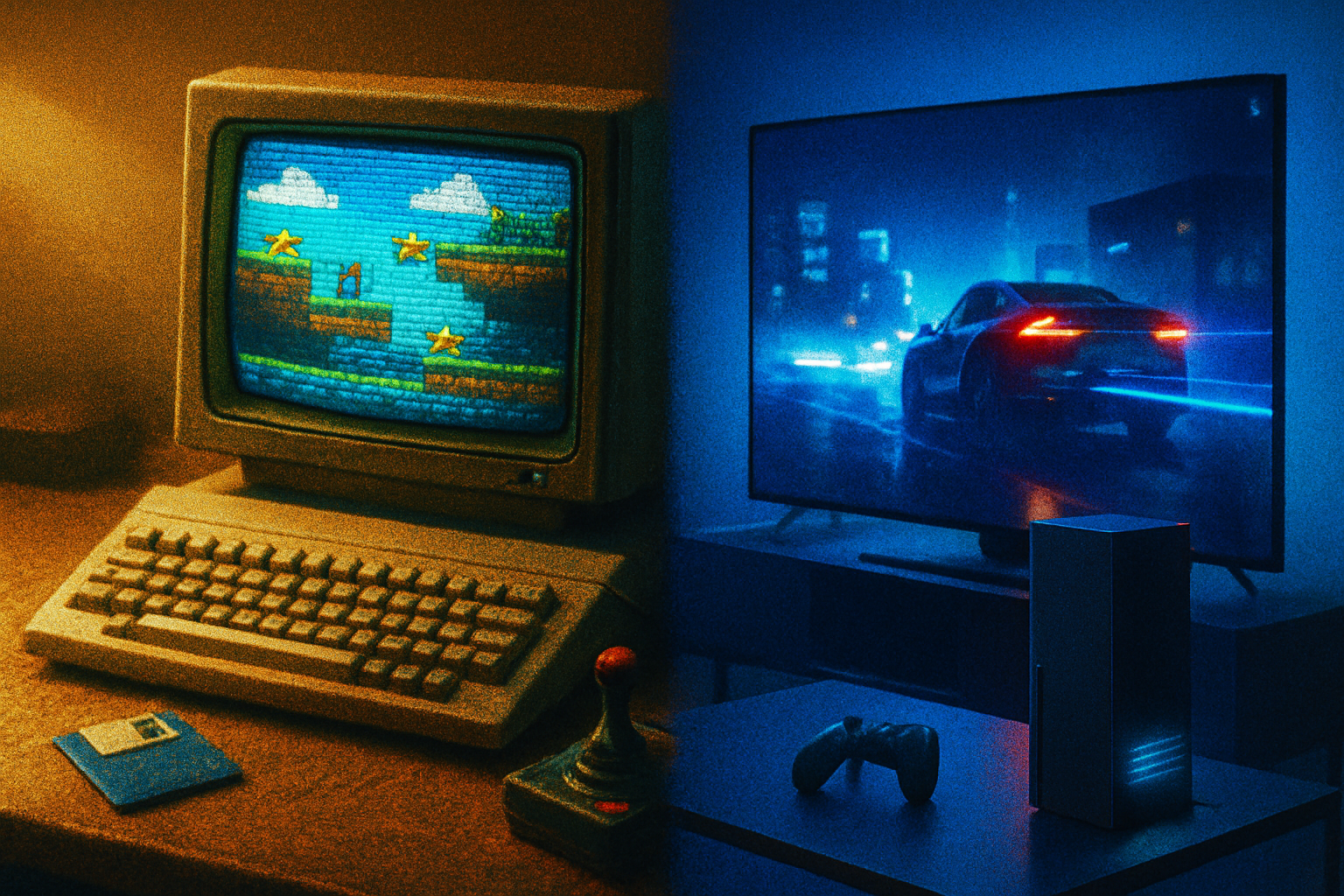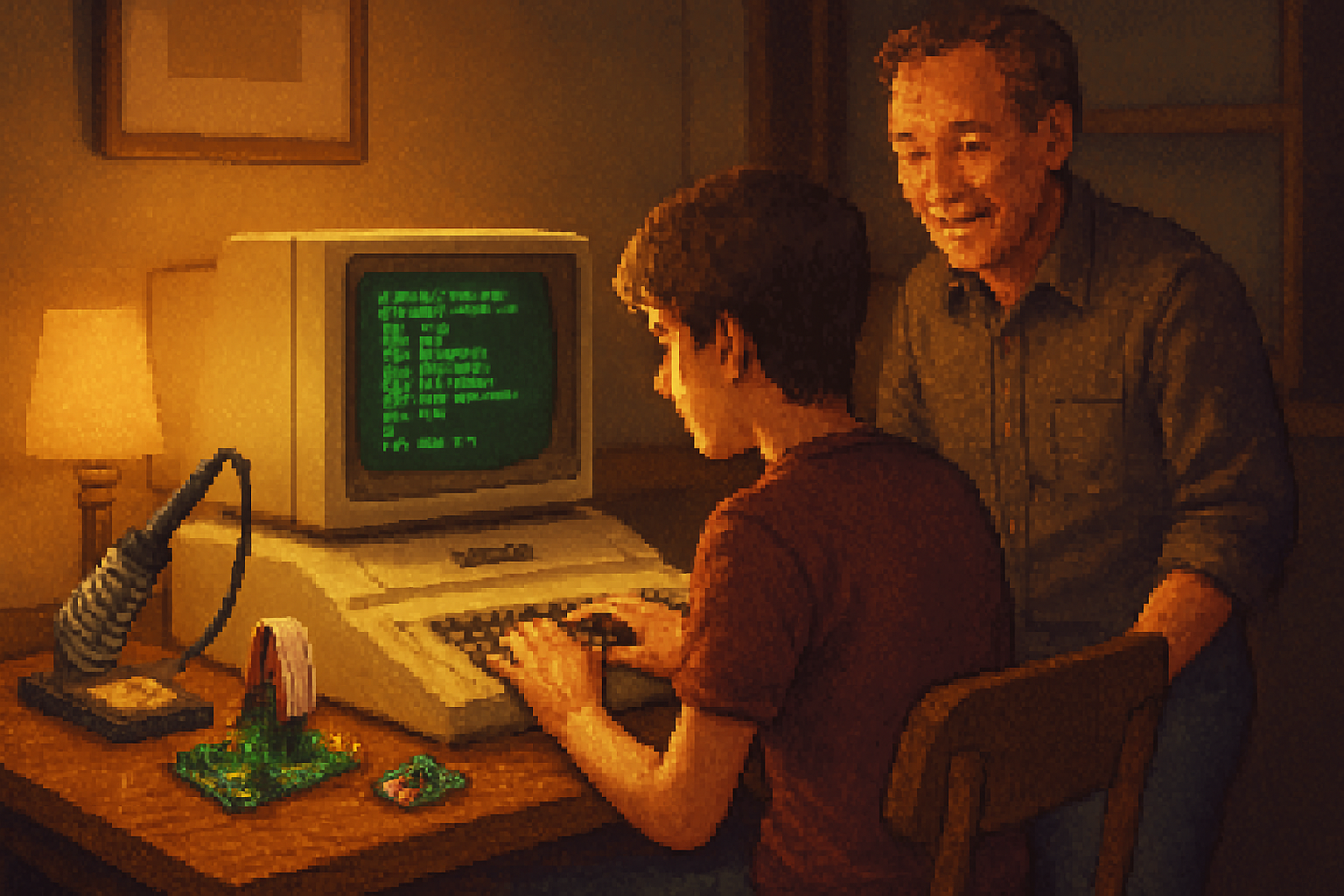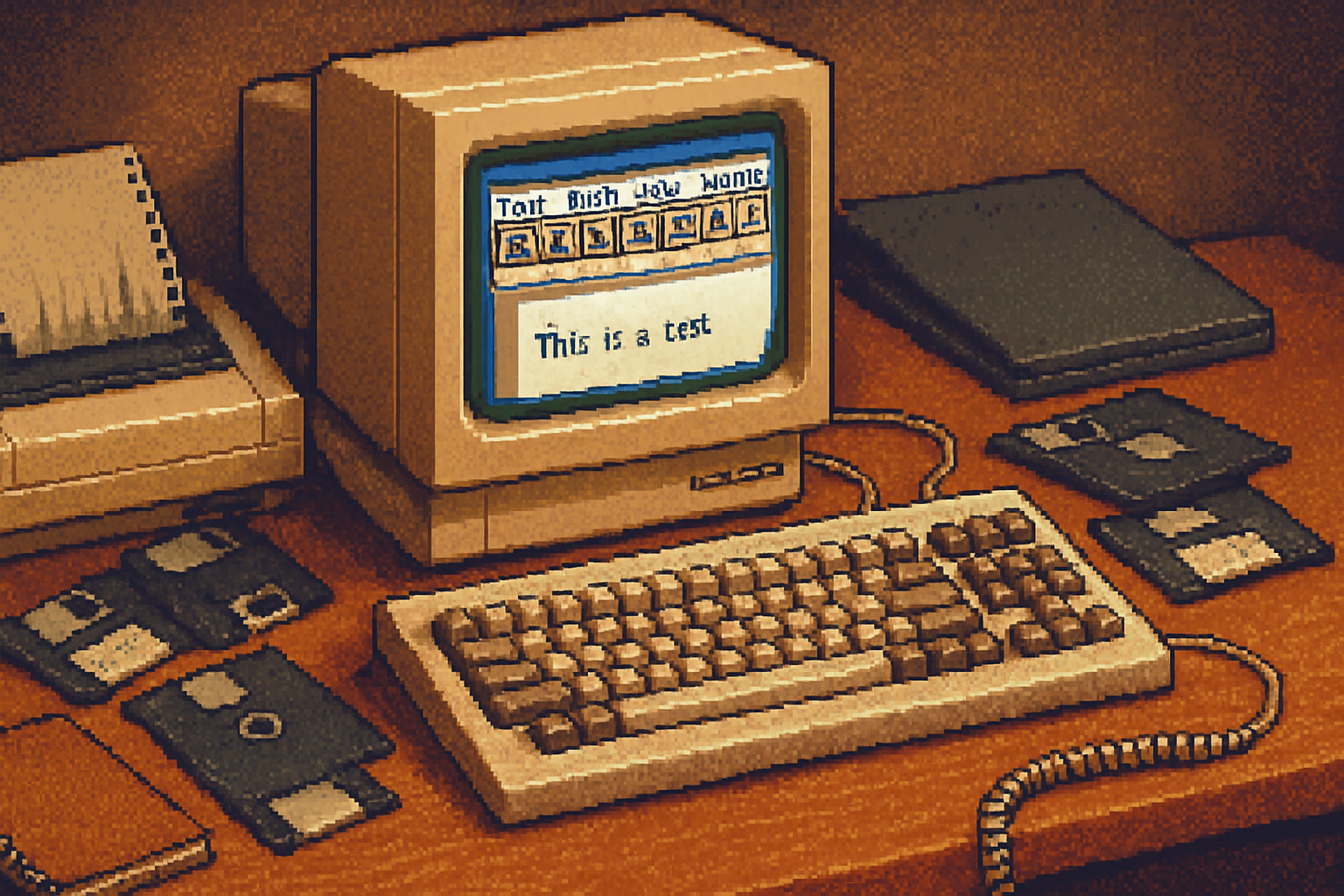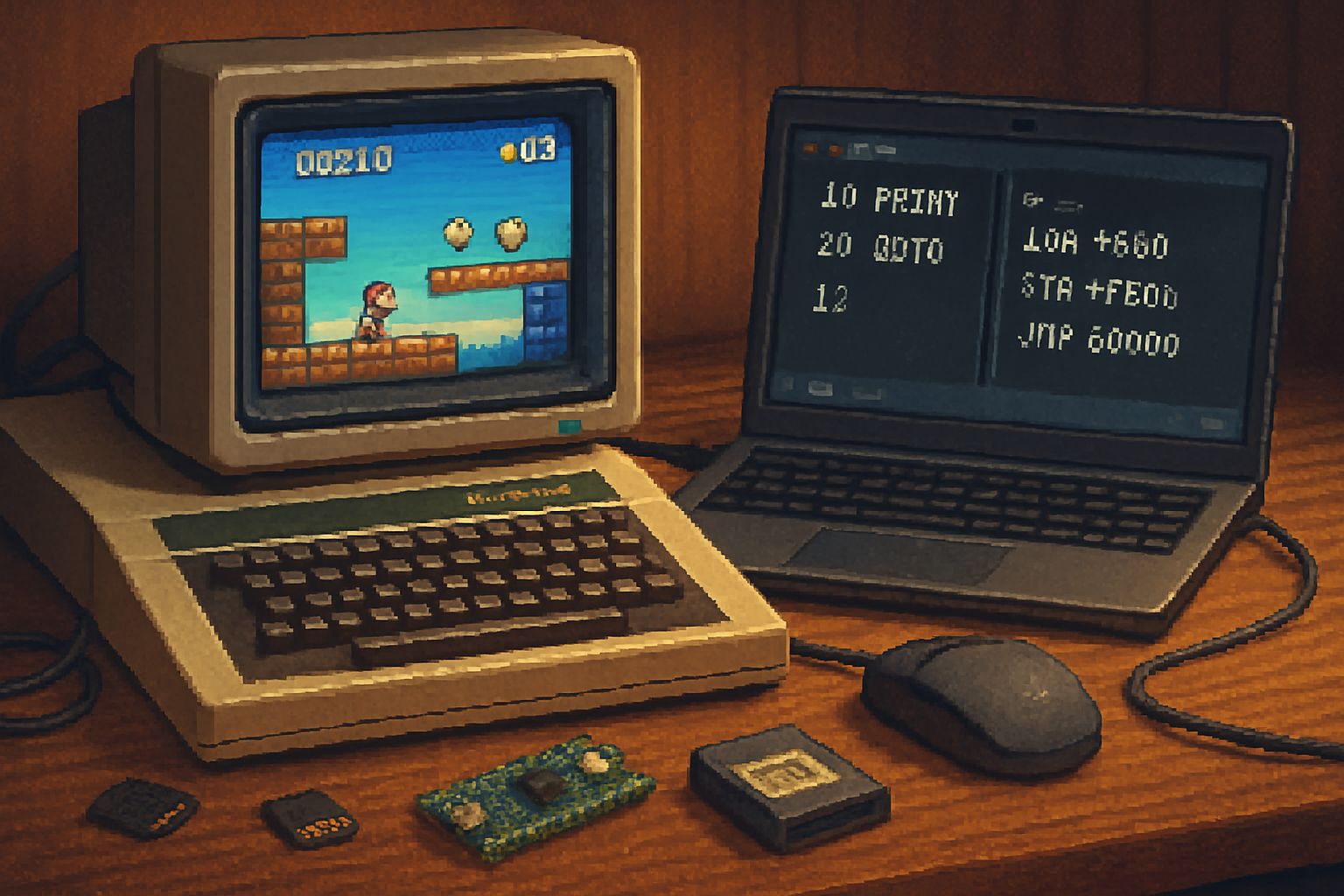· retrotech · 8 min read
Designing the Optimal Retro PC: A Multi-Genre Approach to Components
Learn how to plan and build a retro PC that serves multiple gaming genres-RPGs, arcade, FPS, racing and more-covering hardware choices, compatibility, emulation vs native play, peripherals, troubleshooting and example builds.
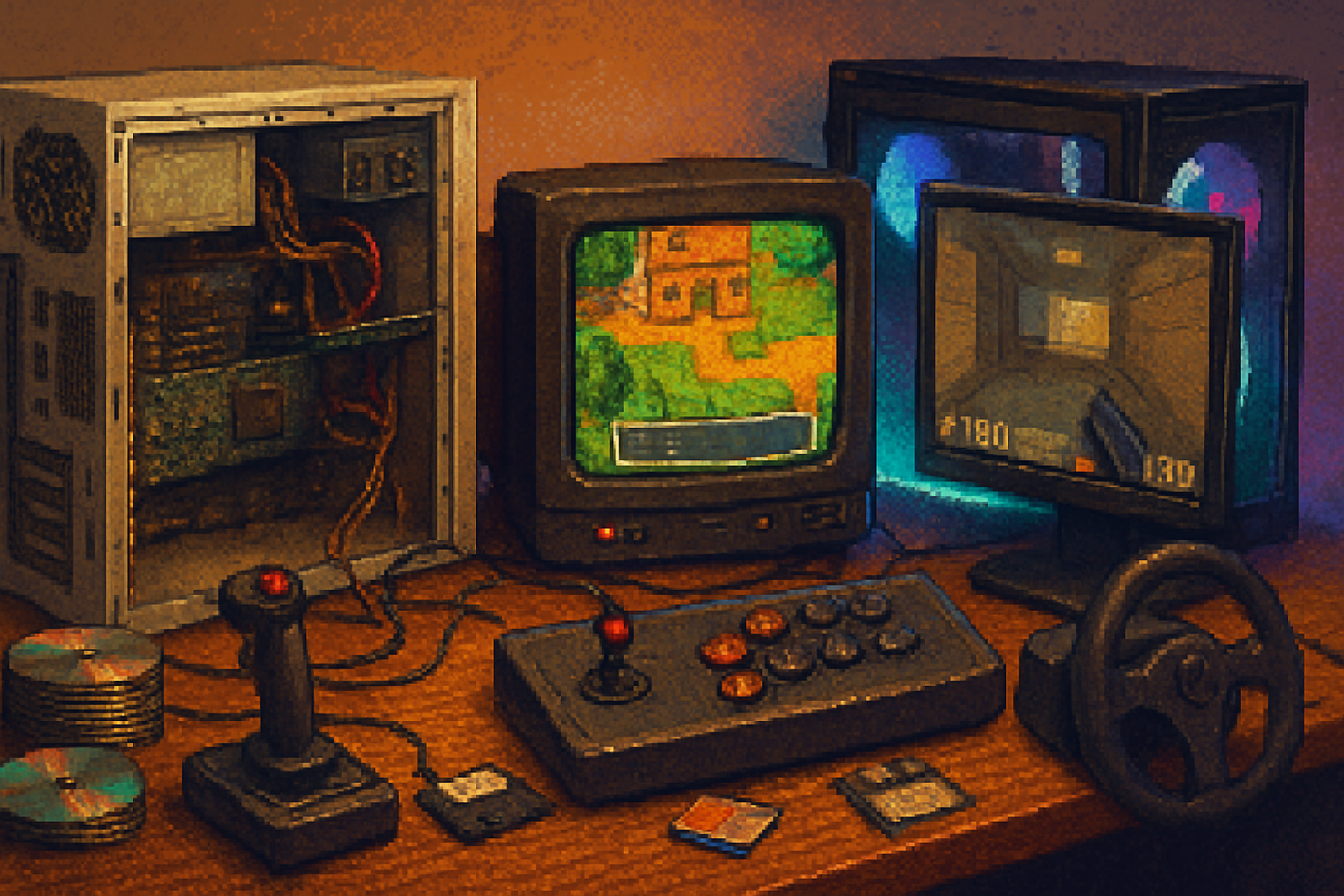
Introduction
Building a retro PC is more than nostalgia-it’s about matching hardware to the kinds of games you love. A machine tuned for turn-based CRPGs will look very different from a rig built to run Quake with authentic 3dfx glide performance or a cabinet-like arcade machine for MAME. This guide explains component choices and compatibility trade-offs so you can design a single machine (or a compact set of machines) that satisfies players across genres.
Why a multi-genre approach?
- Save space and cost by consolidating functionality where possible.
- Avoid “single-game” traps-get the right balance of legacy connectors and modern conveniences.
- Use emulation and software wrappers to expand compatibility without needing every piece of rare hardware.
Key design philosophies
- Modularity first - prefer motherboards and cases with expansion options you can change over time.
- Emulation vs native - use emulation for very old or very obscure boards (MAME/PCem/DOSBox), and native hardware for era-authentic audio/3D where it matters.
- Target the critical components for each genre - CPU speed and single-thread performance, 3D accelerator card, sound hardware, analog controllers and display type.
Essential components and compatibility concerns
Motherboard & CPU
- Era choice drives compatibility. Want DOS/Win3.1/Win95 era titles? Socket 7 / Socket 370 / Slot 1 boards are useful. For Win98/2000-era titles consider Socket 370 or Socket A (Athlon) mobos.
- Look for boards with a mix of legacy and modern features - PCI slots, AGP (for many classic 3D cards), onboard IDE headers and optional USB.
- If you plan to run very old ISA cards (e.g., some sound cards), you’ll need specific vintage boards - remember ISA isn’t directly convertible to PCI.
GPU / 3D
- For authentic 1996–2001 3D performance - 3dfx Voodoo (1/2/3), Riva TNT/TNT2, early nVidia (GeForce 256–4), and early ATI cards (Radeon 7000) each deliver different experiences. Glide (3dfx) vs Direct3D/OpenGL: some games only support Glide.
- If you want newer displays (HDMI), plan for pass-through solutions or wrappers (see software section). A common compromise - native vintage GPU + dgVoodoo2 or nGlide on a modern GPU.
Sound & MIDI
- Sound affects immersion more than many expect. Sound Blaster (SB16, AWE32/AWE64) remains the standard for DOS-era DOSBox/native games. Gravis Ultrasound (GUS) is beloved for tracker music in certain scenes.
- For MIDI and FM synthesizer authenticity, consider a Sound Canvas or an external MIDI module, or use software MT-32/GUS emulation.
Storage & Optical
- IDE/ATA was standard. Modern SSDs can be adapted to IDE via mSATA/mSATA-to-IDE adapters or using an IDE-to-SATA bridge. Optical drives - some CDs contain protected audio/data and may need an actual vintage drive for perfect compatibility.
Inputs & Controllers
- Keep PS/2 ports for certain retro mice and keyboards. Joysticks and analog devices may require legacy gameport or USB adapters.
- For fighting games and arcade experiences, USB encoder boards (e.g., i-Pac, Zero Delay) let you build control panels but keep low-latency operation.
Displays & Video Scalers
- CRT monitors are ideal for authenticity (perfect scanlines, low latency), but bulky.
- For flat panels, use scalers like the OSSC or Framemeister or software-based scanline shaders in RetroArch to reproduce the look of CRTs.
Power & Cooling
- Vintage PSUs or adapters may be required for older molex connectors or to power a motherboard with legacy pinouts.
- Monitor fan and capacitor health in vintage motherboards; consider recapping as preventive maintenance.
OS & Software Compatibility
- DOS games - FreeDOS or native MS-DOS work; DOSBox is easier for many titles.
- Windows 95/98/XP - For authentic hardware drivers, use native installs. For convenience, emulate within PCem or a VM for many titles.
- Useful tools - DOSBox (
Genre-by-genre component guidance
- RPGs (CRPGs, JRPGs, tactical)
- Requirements - Good CD audio support (for many full-motion video and music tracks), stable file I/O, dependable soundcard (Sound Blaster AWE64 for MIDI), and decent single-threaded CPU.
- Recommended hardware - Socket 370 or Pentium II-class CPU, 64–256 MB RAM, IDE or adapted SSD, Sound Blaster-compatible card or software MT-32 emulator.
- Notes - Many 90s RPGs are fine in DOSBox/GOG releases; however, if you want authentic MIDI/SB FM, use real hardware or high-quality software emulators. PCGamingWiki (
- Strategy / 4X / Turn-Based
- Requirements - Strong single-thread CPU, stable drivers for 2D rendering, LAN capability for multiplayer.
- Recommended hardware - Slightly higher single-core CPU speed (Pentium III / early Athlon), wired Ethernet adapter (many vintage boards have 100 Mbps NICs), 128–512 MB RAM.
- Notes - Many strategy games like Civilization II/III or Age of Empires are tolerant - stable drivers and correct DirectX runtime matter.
- 3D Shooters & Early 3D (Quake, Unreal, Glide-era)
- Requirements - 3D accelerator support-Glide or Direct3D depending on the game. Low input lag and proper framebuffer formats.
- Recommended hardware - AGP motherboard with a 3dfx Voodoo 2/3 (for Glide authenticity) plus a pass-through VGA or secondary card for desktop output, or Riva TNT2/GeForce2 for Direct3D.
- Software fallbacks - nGlide (
- Racing / Sim
- Requirements - Low-latency analog inputs (wheel/pedals), force feedback, smooth frame rates.
- Recommended hardware - Early 2000s-era hardware if you want force feedback device support; otherwise USB wheels with modern wrappers or dedicated PCI cards for analog input. A solid GPU (GeForce/ATI) and enough CPU power for physics.
- Arcade / Beat-’em-ups / MAME
- Requirements - Accurate emulation possible with MAME; for original PCB play, you’ll need JAMMA harnesses and possibly a test bench.
- Recommended hardware - Modern PC running MAME with a good controller or a reproduction JAMMA-to-USB encoder for your cabinet. For original boards, you’ll need compatible power supplies and a CRT arcade monitor or a scaler.
- Notes - MAME and archival resources:
- Point-and-Click / FMV Adventures
- Requirements - CD-ROM and reliable media playback, FMV codecs, and in some cases specific CPU/APU combos for timing.
- Recommended hardware - Classic Win95/98 install with original codecs, or a VM with disk images. Many GOG re-releases (
Example build templates
A) Vintage Authentic: “Win98/Quake Era” (native hardware focus)
- Motherboard - Socket 370 / i815/KT133-based board with AGP & PCI slots (used market)
- CPU - Pentium III (600–1000 MHz) or Celeron/early Athlon
- GPU - AGP 3dfx Voodoo3 or TNT2 (around 64–128 MB)
- Sound - Sound Blaster AWE64 or SB16
- Storage - IDE HDD or SSD via mSATA->IDE adapter
- Peripherals - PS/2 keyboard/mouse, gameport adapter for analog joystick, CRT if possible
- Pros - Authentic drivers, native glide support. Cons: Harder to get HDMI output, parts can be fragile and noisy.
B) Hybrid Modern Retro: “All-in-One with Wrappers”
- Motherboard - Modern ATX with PCIe, plenty of USB and a good GPU
- CPU - Mid-range modern CPU (e.g., Ryzen 5 / Intel Core i5)
- GPU - Modern GPU (nVidia/AMD) with dgVoodoo2 & nGlide for wrappers
- Sound - USB DAC or internal sound card plus software emulation (MUNT/MT-32) for MIDI
- Storage - NVMe/SSD
- Peripherals - USB gamepads, arcade encoder, CRT via OSSC if needed
- Pros - Best convenience, modern display/output, power efficiency. Cons: Some titles require tweaking or wrappers for perfect behavior.
C) Arcade/Emulation Station
- Motherboard/CPU - Modern, small form factor (Mini-ITX) enough to run MAME/RetroArch
- GPU - Integrated or low-end discrete GPU
- Peripherals - USB encoder (i-Pac), arcade stick or cabinet, CRT/scaler
- Software - RetroArch, MAME
- Pros - Minimal maintenance, broad emulator support. Cons: Not native hardware authenticity for PC-exclusive titles.
Maintenance, sourcing and safety
- Sources - eBay, local classifieds, specialist forums (VOGONS:
- Safety - Always unplug before tinkering. Older capacitors may fail-recapping services or knowledge required.
- Cleaning - Isopropyl alcohol and a soft brush for contacts; use DeoxIT for edge connectors.
Software helpers and wrappers
- DOSBox - great for classic DOS titles (https://www.dosbox.com).
- PCem - accurately emulates entire vintage PC hardware to run OS installs as if on native hardware (https://pcem-emulator.co.uk).
- dgVoodoo2 - Direct3D wrapper that can translate old APIs to modern ones (https://dege.freeweb.hu/dgVoodoo2/).
- nGlide - Glide wrapper to run Glide-based titles on modern systems (https://www.zeus-software.com/?page_id=54).
- RetroArch and cores - unify multiple emulator frontends (https://www.retroarch.com).
Display and scanline solutions
- CRTs - Best for authenticity. If you can’t keep one, consider a good scaler (OSSC:
- Frame rate and resolution - Classic games often target 320×240–800×600. Modern monitors will upsample - use integer scaling or OSSC for best visuals.
Testing and troubleshooting checklist
- BIOS - disable power-save features that can throttle old software, ensure correct CPU multiplier and voltage for vintage CPUs.
- Drivers - install in this order: motherboard/chipset, GPU, sound, input devices.
- Verify sound - test MIDI, FM synth, and digital playback with known-good files.
- Test 3D - run a Glide/Direct3D test app for your era (Quake/GLQuake demos, Unreal) to confirm driver behavior.
- Monitor temps and voltages for vintage hardware.
Resources and further reading
- DOSBox (https://www.dosbox.com)
- PCem (https://pcem-emulator.co.uk)
- dgVoodoo2 (https://dege.freeweb.hu/dgVoodoo2/)
- nGlide (https://www.zeus-software.com/?page_id=54)
- MAME (https://www.mamedev.org)
- Vogons community (https://www.vogons.org)
- PCGamingWiki (https://www.pcgamingwiki.com)
Final checklist before you power on
- Are your expansion cards firmly seated and cleaned?
- Is firmware (BIOS) updated to a compatible version with desired features?
- Do you have backups of old media and driver installers?
- Have you set a plan for which games will be native and which will use emulation/wrappers?
Designing a retro PC for multiple genres is a balancing act between authenticity and convenience. A hybrid approach-combining a modern host with emulation/wrappers and a dedicated vintage box for era-critical experiences-gives you the widest coverage with manageable cost and maintenance. With the right parts and a bit of patience, you can craft a machine that plays your favorite RPGs, tears through Glide-era shooters, and brings arcade classics to life, all while keeping driver headaches and compatibility gremlins under control.
